
Cockroaches do bite people, but instances of cockroach bite are very rare. These critters are omnivorous nocturnal pests that eat all edible things, including humans. In case you have suffered from a cockroach bite, then it is an indicator of the fact that the insect got scent of food left on some area of your body and bit you to get a taste of it.
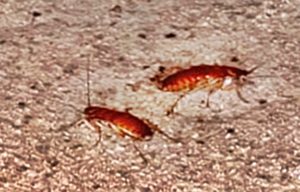
Cockroaches use their blade-like jaws called mandibles for cutting and shredding food, as well as for defense, digging, transportation, and feeding the young. The insects use these mandibles to bite.
Roaches are timid and do not come near humans when they are awake. Hence cockroach bites occur during nighttime, early morning, when one is asleep. Roaches typically feed only on callused skin, fingernails, and eyelashes. They typically bite humans in areas, where food residue is present, such as hands, mouth, fingers, face, fingernails, and eyelashes.
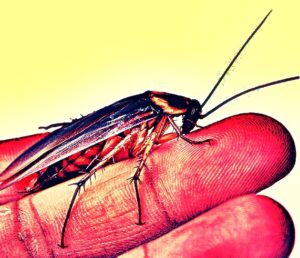
Symptoms of Cockroach bite
Cockroach bites can persist for a week. It can trigger lesions, irritation, and swelling. In some cases, minor wounds may also form. Affected people may feel a twinge or pinch of pain for a few seconds. A cockroach bite can however be very powerful; when biting the critters can generate force that is over 50 times more than their body weight.
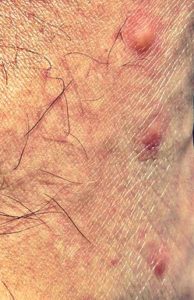
Some of the common signs and symptoms of a cockroach bite are as follows:
- The site of cockroach bite may develop a reddish bump or mark. This lump is generally bigger than a mosquito bite bump and tends to scab over. In some cases, affected individuals may develop a cluster of bumps at the bite site, but such instances are rare.
- Patients may suffer from skin rashes and redness.
- Do not scratch the bumps or the rashes as it will aggravate the condition and result in inflammation and other problems.
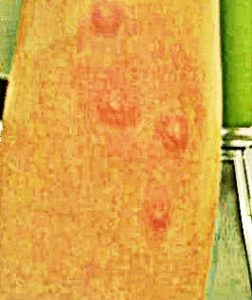
Some patients may suffer from allergic reactions to a cockroach bite. Allergic reactions may occur when the roach comes into contact with a patient’s skin; when the proteins present in the body, feces, or saliva of a roach triggers adverse immune system response; when airborne allergens present in body and waste of roaches are inhaled. Asthmatic patients are at greater risk to suffering from an asthma attack when exposed to airborne cockroach allergens. One of the most severe allergic reactions called anaphylaxis can be life-threatening and patients may experience symptoms like breathlessness, low blood pressure, and shock, etc.
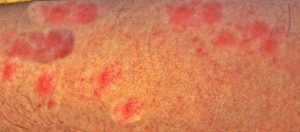
Roaches do not transmit diseases to humans directly via a bite. Instead, they cause illnesses by contaminating foods and surfaces. They carry different microbes, parasites, etc on their bodies. The critters may also transmit diseases via their feces, dead bodies, etc. Infection of humans may occur when such pathogens find a way inside the body via inhalation or open wounds. Some diseases caused by transmission of germs carried by cockroaches are dysentery, cholera, gastroenteritis, giardia, listeriosis, staphylococcus, poliomyelitis virus, streptococcus, and Escherichia coli.
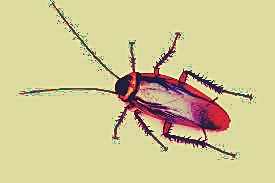
Treatment of Cockroach bite
The first thing that needs to be done is cleaning the site with soap and water. Do not press or rub the cockroach bite. It is important to always visit a doctor for treatment in case of a cockroach bite in or around the eye.
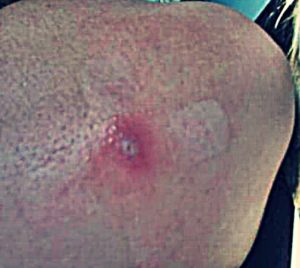
Presented below are some treatment options for a cockroach bite.
- Cleaning the cockroach bite wound: Take a cotton ball, dip it some antiseptic like alcohol, and apply on site to clean it. You may also use other antiseptics like witch hazel, or tea tree oil diluted in carrier oils like coconut, apricot, or almond oil.
- Stop inflammation and itching: Cockroach bites tend to be itchy. Patients however need to resist the desire to scratch as the skin can easily tear, thereby increasing the risk to infections or exacerbation of inflammation. Keep the area raised or elevated to reduce swelling. Apply different products to soothe the itchiness and alleviate the swelling
- Use an ice pack on the cockroach bite. The cooling feeling will reduce the swelling and cause the area to become numb thereby easing itchiness. Apply the ice pack for 10 to 15 minutes every day.
- Apply a paste of baking soda and water on the bite to stop the itchiness.
- Apply lavender oil diluted with a carrier oil to soothe the itching and inflammation. It will also ensure that the wound remains clean. Lavender oil is particularly effective in easing itching caused by bug bites. Other oils that can be also used include eucalyptus, tea tree, peppermint, rosemary, and basil.
- Application of calamine lotion on the site of a cockroach bite can also alleviate swelling and find relief from itching
- Aloe vera gel can also be used to keep the wound clean and prevent itchiness. Honey can soothe itchiness at the bite site.
- After taking advice from doctor, you may apply hydrocortisone to minimize itching and inflammation
- Preventing infections: It is important for patients to stay on the lookout for infections of the cockroach bite. A few signs of infection are swollen glands; redness, pain, or excessive inflammation at the bite site; and/or formation of pus within or around the bite area. Patients need to seek medical attention in case of an infection.
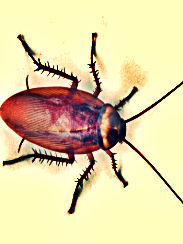
Prevention of Cockroach bites
The best method to prevent a cockroach bite is to eliminate roach infestation and ensure that they stay out of your house. It is best to contact a pest management professional or an exterminator to get rid of a roach infestation. But you can also get rid of the critters via DIY methods like sticky pads, boric acid powder, and insecticides, etc.
Cockroaches come inside the house for food, shelter, and water. You may take the below mentioned measures to ensure that your home becomes inhospitable for roaches:
- Ensure that the house is clean. Vacuum and sweep the house and wipe all counters on a daily basis.
- Regularly take out the garbage
- Do not keep any dirty dishes and clean them immediately
- Seal all food bags that are open and store eatable in airtight boxes
- Remove all standing water and fix leaky pipes
- Seal and repair all gaps, cracks, and holes in the walls, structure of the house to prevent the entry of cockroaches
- Do not keep stacks of laundry, newspapers, or magazines lying around
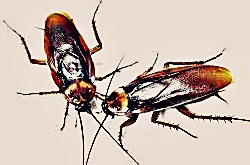
Leave a Reply